Happy Fall! 11 Tricks to Use Now in Your Yard
From my awesome aunt's habitat garden, among others
Happy fall! And welcome to all of you who recently received gift subscriptions from Plan it Wild. Congratulations on completing the Less Lawn More Life challenge!
If you haven’t completed the Less Lawn More Life challenge and want to, you can start it — and get your Wildr Score — at any time at lesslawnmorelife.com. As garden columnist Margaret Roach wrote last week in the New York Times,
What if the first step in transforming your lawn-dominated home landscape into a place of enhanced biodiversity could be fun, educational — and free? — The New York Times [gift link]
Everyone: Save the date for my daughter Zoe and my FREE Turn That Patch Into a Plan Zoom workshop on Tuesday, December 9, at 6 p.m. ET, hosted by Wild Ones. You can register here now. I (modestly) think all of you will benefit from this fun, interactive workshop — and winter is the perfect time to develop an overall layout for your yard.
Green mulch for dry shade
Hi Heather! I would very much like to stop using wood mulch and replace it with plants. What do you recommend as a perennial or self seeding annual ground cover for dry shade under a quaking aspen? — Julia, Minnesota
So many choices! Many, many plants have evolved to grow in shade — even dry, total shade (less than 2 hours of sunlight a day) — and now is a great time to seed or, if you act quickly, plant. To ensure a dense bed of greenery, I recommend replacing your existing mulch with an inch or so of leaves and choosing plants that spread easily by seed or rhizome (roots). Keep in mind that shade plants tend to grow more slowly than sun-lovers.
So, how to choose? It’s helpful to have a mission for your planting. If your goal is to maximize the amount of food for bird nestlings, then you’d plant keystone species like wild strawberry or violets. (Find your keystones at nativeplantfinder.nwf.org.)
If your goal is to have blooms all season or to harmonize flower colors, you can search for plants and seeds at prariemoon.com, an excellent online native nursery that happens to be in Minnesota. I used filters for your criteria (e.g., sunlight, moisture, state, color, bloom time) and found two of my white-blooming favorites: tall thimbleweed for spring through summer and big-leaved asters for summer into fall.
Or your goal might be recreating natural plant communities. In Minnesota’s northern mesic (i.e., dry) mixed forest where quaking aspens grow, “Common ground-layer plants include wild sarsaparilla, large‑leaved aster, bluebead lily, bunchberry, and Canada mayflower,” according to the state’s Department of Natural Resources.
For more possibilities, see my column on Vibrant Native Plants for Shade. Happy planting!
— Heather
P.S. Readers, your comments and questions inspire me! Please use “comments” below to ask questions and add your thoughts and experiences.
P.P.S. Check out the final bullets for some timely tips — deer management, seed collecting, and more.
Design tricks for natural landscapes
I am constantly scanning garden design books and magazines for ideas to share with you. And, as often as possible, I visit gardens in person. Here are some recent finds:
1. Branch art under trees
On the topic of growing under trees — creating “pupation stations,” as Doug Tallamy calls them — artfully arranging dead twigs and branches around the base of a tree protects new plants as they establish, while signaling intentionality, hosting wildlife, and — eventually — contributing organic material to the soil. Ecological horticulturalist Rebecca McMackin, curator of the Substack Grow Like Wild!, presents this trick from her home garden in an upcoming short film from Plan it Wild, which I saw in a sneak preview.
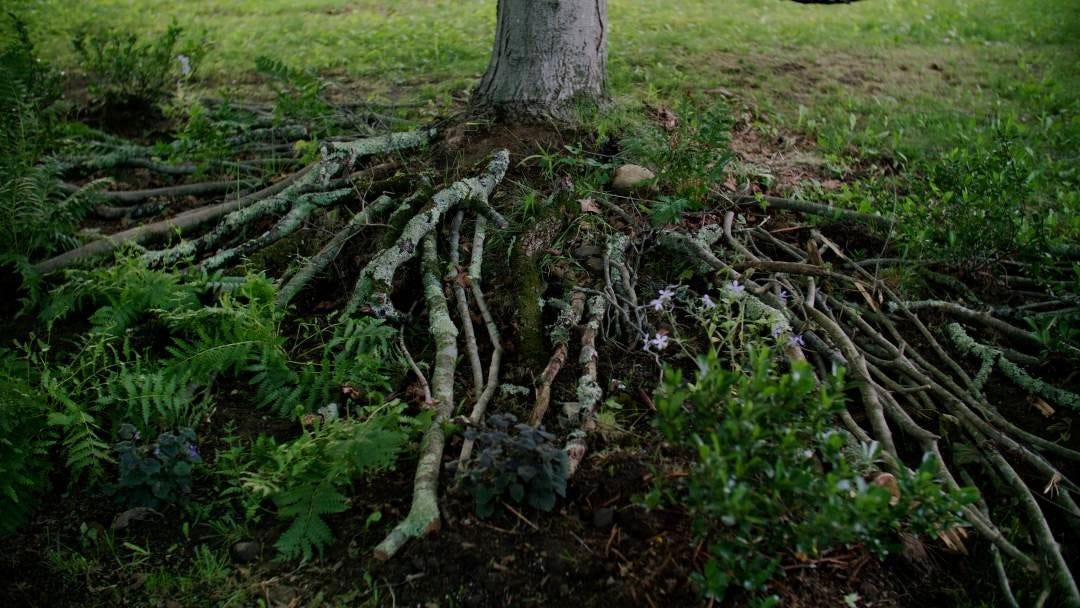
Imagine my surprise to rediscover my long-lost aunt (!) hosting a Garden Conservancy Digging Deeper event! Pete and I attended, of course. Robin Wilkerson is a professional garden designer who has transitioned her own two acre garden outside Boston into an ecological eden. Here are ideas from Wilkerson’s garden that I intend to apply in my own yards:
2. Woodland edge beds
Regular readers know I’m a big advocate of shrubs for their outsized design and ecological value. I recommend them to add privacy, obscure fences, divide garden rooms, and to create focal points, for example.
But I had not thought to use them to anchor a series of planting beds, each bed with a tall central shrub surrounded by a distinct herbal combination. These islets create a sense of mystery and delight when you wander the grass paths of the archipelago, with new discoveries at each intersection or turn.

3. Eastern white pine “shrubs”
Most of us want more evergreens, for texture, screening, and winter color. Unfortunately, there are few fast-growing species evergreens in the useful six to eight-foot shrub size. That’s why I love Wilkerson’s solution, which she describes as “lopping off the tops of white pines” that otherwise grow several feet a year to 50 feet or more. When I asked for details, Wilkerson wrote:
I try to keep them at about 6 to 8 feet so I can reach them with my loppers. And frankly, I do it whenever I happen to be passing by and see a stray limb seeking dominance and reaching for the sky. Nothing seasonal about it except that at Christmas a lot of friends come by for greens and probably the bulk of the pruning is done then. Each tree maybe gets attention 2 or 3 times a year and it doesn’t seem to matter particularly when… One does have to be quite ruthless, but they don’t seem to mind!
(For more small evergreen ideas, see 15 Best Dwarf Evergreen Shrubs to Plant in Fall in Every Region, but keep in mind that most dwarf evergreens grow very, very, very slowly.)
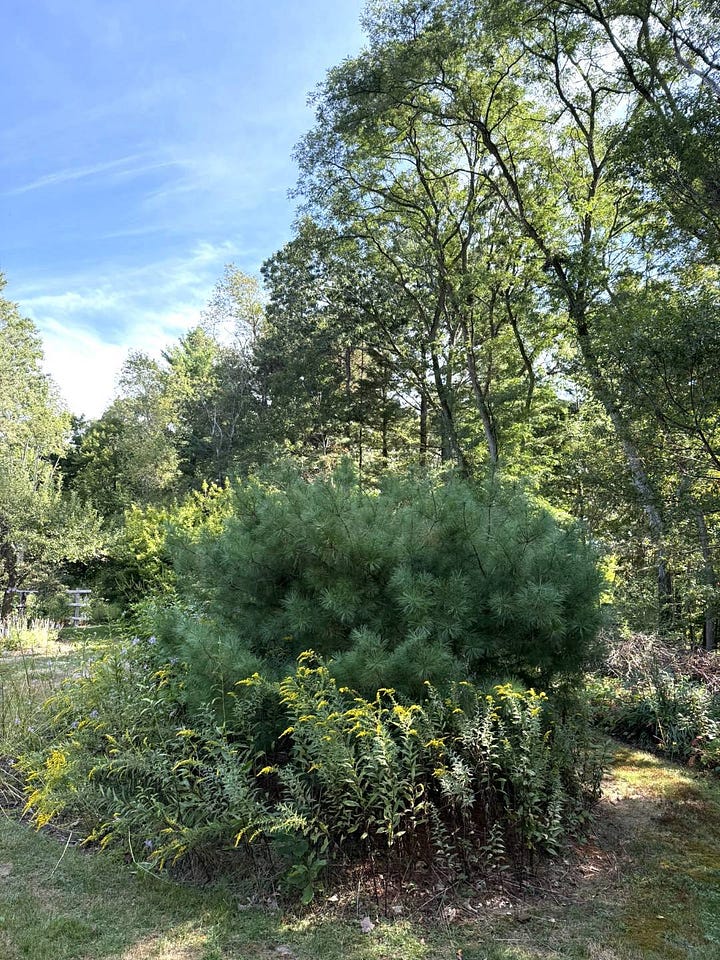
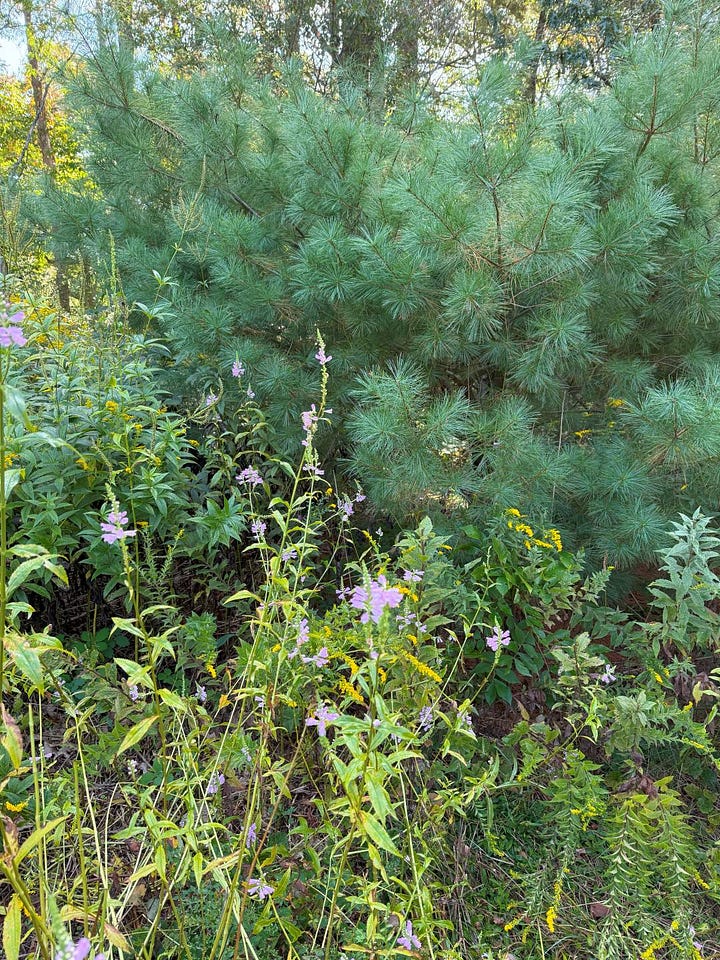
4. Brushwood hedge
Wilkerson used an old English farming technique and created a brushwood hedge — also called a windrow or dead hedge — along one long border of her property. Essentially an organized brush pile, it’s attractive and adds enormous wildlife value.
Creating brush piles, also known as habitat piles, is a quick and easy way for you to benefit many species of wildlife. Made up of woody debris and loose leaf litter stacked together, these piles provide great shelter for small mammals like chipmunks, voles and squirrels, along with amphibians and reptiles such as salamanders and snakes. Weasels, foxes, and hawks will also use them for shelter and hunting grounds. Many birds use these woody sanctuaries for cover and will often times nest along logs or under a pile of branches on the ground. Over time, the decaying wood will bring insects for birds and small mammals to feed on and ultimately give nutrients back to the soil. — U.S. Fish & Wildlife Service
Wilkerson swears the brushwood hedge also keeps the invasives in the woody lot next door at bay. (Note: If you’re in a wildfire-prone area, learn safe ways to keep brush on your property in Firescaping to Protect Your Family from Wildfires.)
5. Rain barrel bog garden
Wilkerson’s solution to not having soil moist enough for a bog garden (and creatures like fireflies that need moist soil): A hose attached to the bottom tap of a rain barrel under a downspout provides a slow drip, while a kiddie pool buried underneath the soil holds the moisture.
6. Rows of berry canes
Wilkerson lets the birds eat her blueberries, but harvests plenty of raspberries and blackberries for her own enjoyment by growing canes in rows held up by twine strung between sturdy posts. The way the berries hang down makes them inaccessible to birds. This arrangement also controls the vines’ spread, which can overwhelm other plantings. (You can always feed birds by letting brambles have their way in a wilder area of the garden.)
7. Shagbark hickory for bats
Wilkerson planted a shagbark hickory (Carya ovata) in her woodland garden to provide habitat for bats. Who knew? According to the Urban Ecology Center,
It has been well-documented that many bat species, including big brown, little brown, silver-haired, and hoary, use shagbark hickory trees as day roosts. The bats crawl up under the curls of bark and sleep there during the day, emerging in the evening to devour thousands of insects per night.
8. Lindheimer’s beeblossom (Oenothera lindheimeri)
I saw many plants in Wilkerson’s garden that I’m going to plant — from climbing hydrangea to winterberry to spring flowering big-leaf witch hazel to black willow, a keystone I incorrectly thought required too much water to grow without irrigation in my garden.
But the new discovery that captured my heart is Lindheimer’s beeblossom, which Wilkerson grows in the cottage garden close to her house. Native to Louisiana and Texas, it’s perfect for the white-pink-coral flower palette in my new Gainesville, Florida, yard. This is an example of an extraordinary native worth planting — though not counting as part of your “two thirds for the birds” — well outside its range.
9. Dahlia cutting garden
When I visit gardens that are not mostly native, I’m not looking at the plants themselves; I’m looking at the layout, structure, hardscaping, and arrangement of plants. So I was surprised that the only garden that awed me on the Newport Secret Garden Tour was all about the exotic flowers: a raucous display of more than 200 dahlia varieties.
If you want to grow old favorites like dahlias and peonies, one way to work them into into a mostly-native yard is by gathering them together into a cutting garden. And if you plant multiple layers of natives elsewhere, it’s easy to keep two thirds for the birds. As Rhode Island Monthly wrote about the garden I toured,
McLaughlin’s garden is a riot of hues and textures. “Innocence,” “Raspberry Punch,” “Round-About,” “Bashful”: Each one is a kaleidoscope of color. Dahlias affirm the beauty in our differences, and McLaughlin celebrates them all.
10. Crazy paving with repurposed stone
I cringe when I see people replacing lawn with hardscaping, rather than plants. Lawns that thrive without pesticides, fertilizer or irrigation are far more beneficial ecologically than hardscaping. Still, there’s a place for hardscaping and intermingling irregular flagstones with river rock makes a lovely, permeable, and sustainable edge, path, or patio. As designer Charlotte Harris writes in the latest issue of Gardens Illustrated,
I love crazy paving. … Done well, using irregular paving slabs, it is full of character and design potential. It adapts easily to awkward shapes and curving paths without the need for fussy cuts, and its irregularity brings visual richness. It reuses what might otherwise be binned offcuts, broken slabs or unwanted materials being offloaded on online marketplaces.
11. Vine-covered snag
A formal garden among a row of Gilded Age mansions had two enormous snags on either side of a path. Covered with flowering vines, they were beautiful! (If you're unaware of the importance of snags, see Wait! B4 You Cut Down That Tree.) Although the vine was invasive sweet autumn clematis, you can create the same effect with equally fabulous flowering native vines such as Virgin’s bower clematis, American wisteria, Carolina jessamine, and coral honeysuckle.
Wow! Robin Wilkerson’s gorgeous native garden
“The garden curtsies to the house,” a saying based on the teachings of revered English arts and crafts garden designer Gertrude Jekyll, means the garden respects the architecture of the house. Following this precept, many traditional gardens are more formal close to the house and wilder as you move further away. Wilkerson’s home is a New England cottage and, appropriately, she designed a floriferous cottage garden in front of it.
From Around the Internet…
Westchester & Hudson Valley readers: Important live events regarding the deer crisis (and ways to respond) from MHV Wild Ones — Oct. 4 Hooves & Havoc: The Deer Crisis Threatening NY Forests and Oct. 11 Deer Exclosure Workshop. Register and find more info here.
Seeds are best when fresh. Here’s how to collect seeds from your own garden in autumn.
Up to half a billion birds are migrating southward each night. Learn how researchers use weather radar to track them [gift link]. (And, if you’re in their path, turn off or block out lights at night. Here’s why and how.)
Have you heard about the Chicago River Swim — first in a century? Nothing to do with plants, but I found this article heartwarming [gift link]. Things can get better.


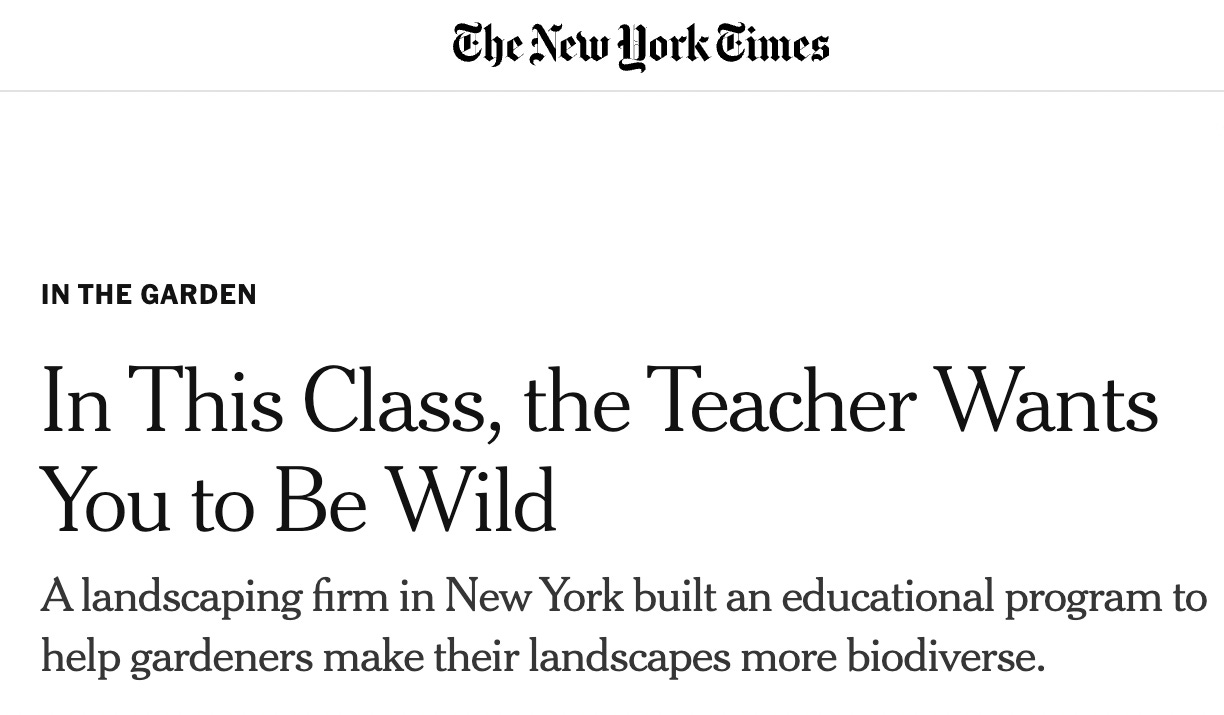
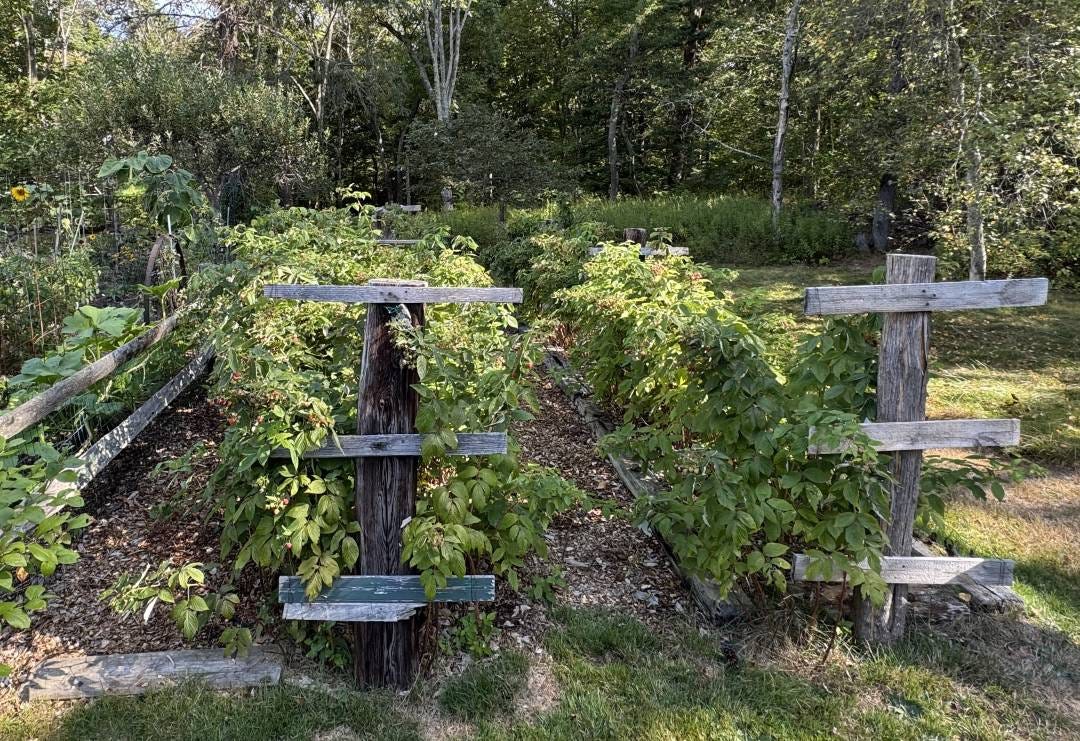
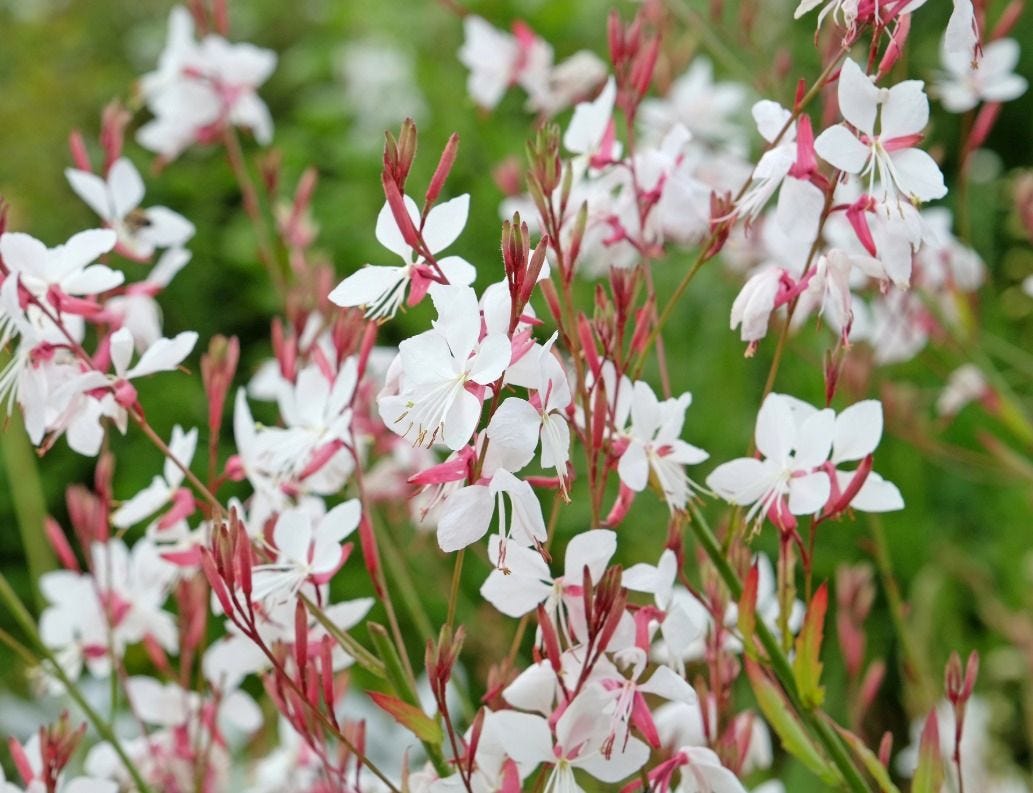

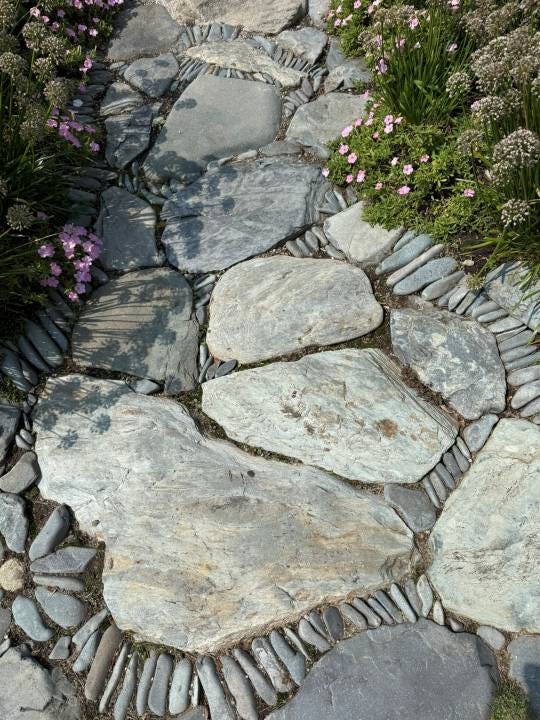
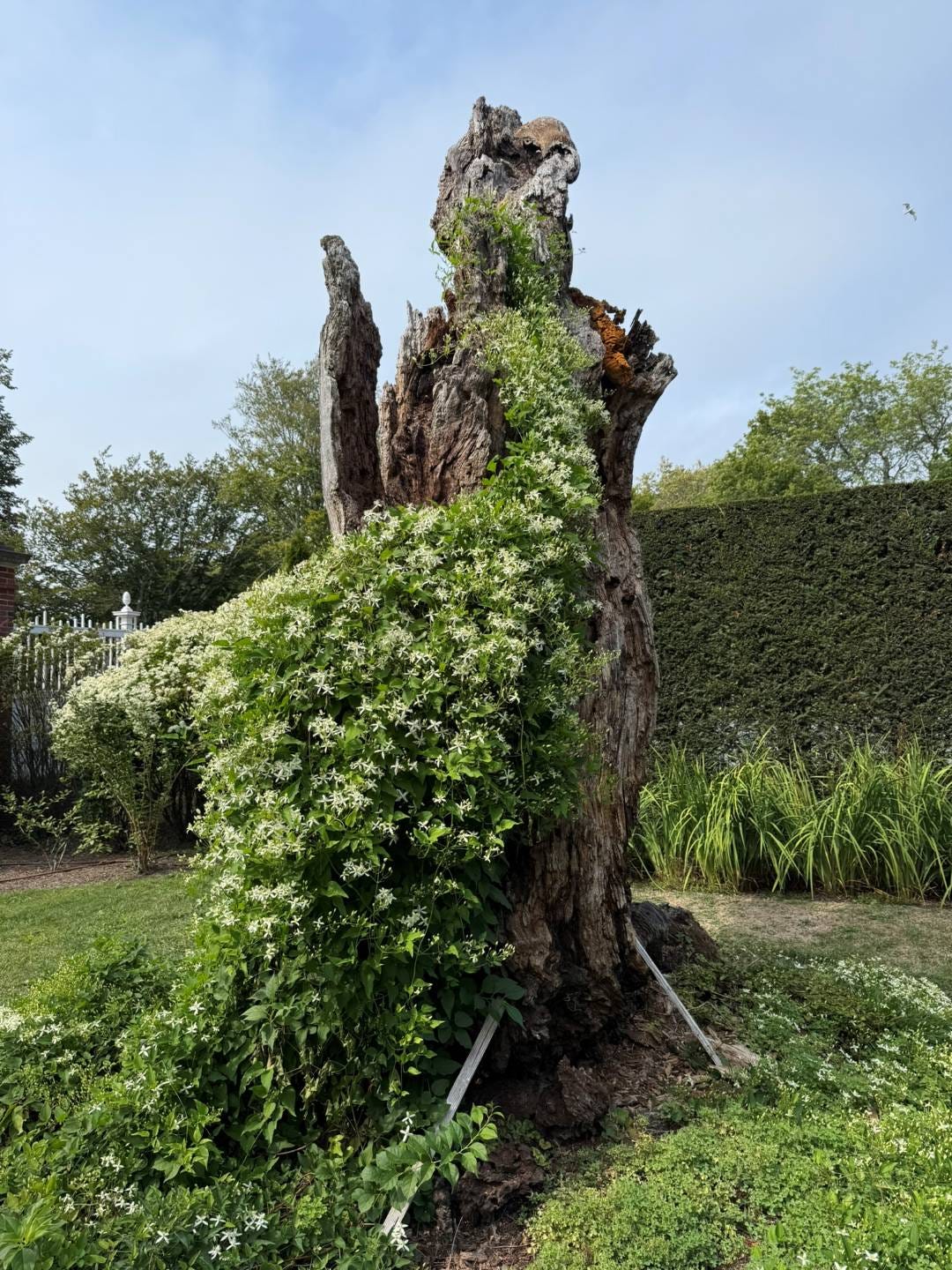
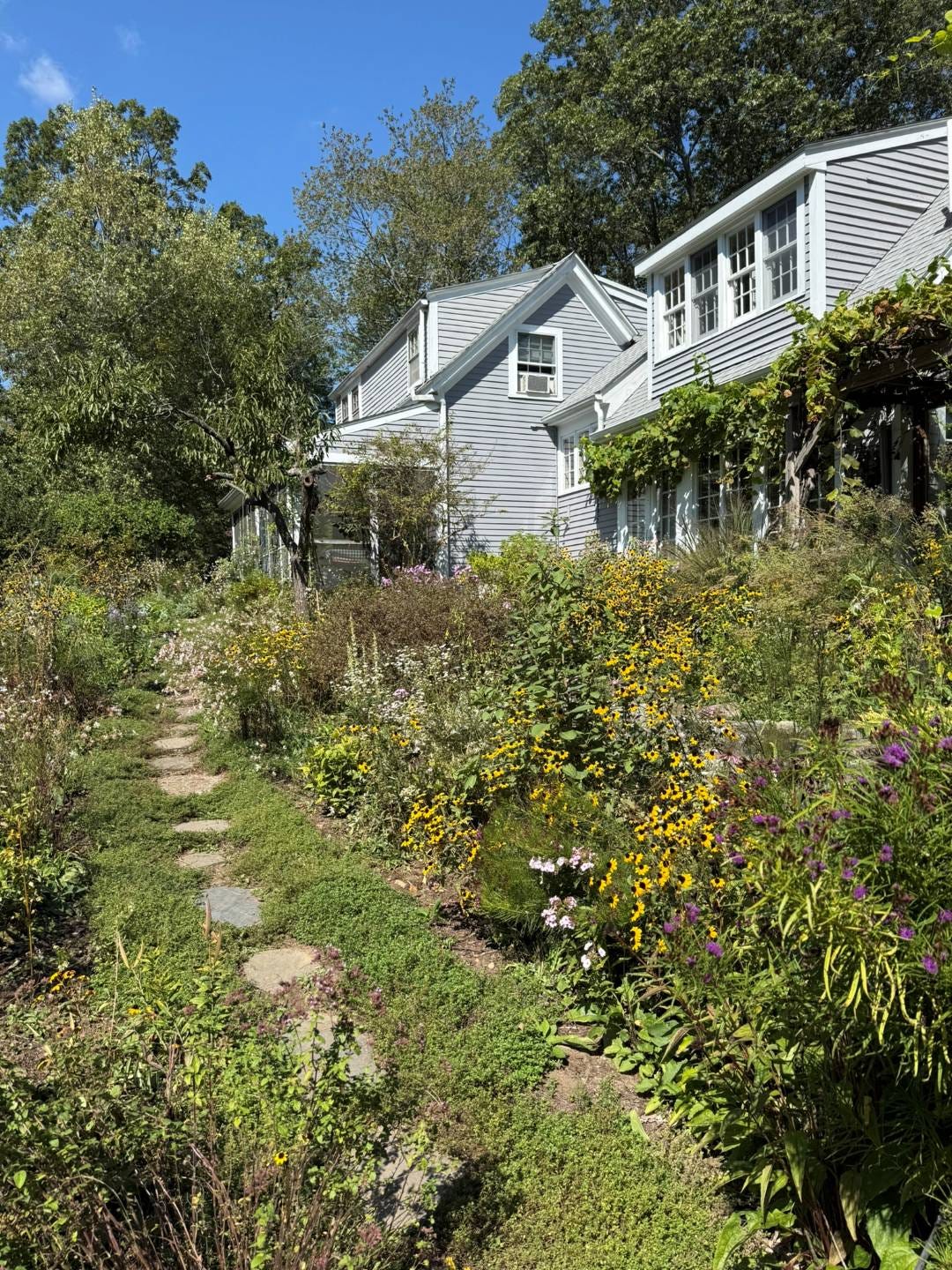
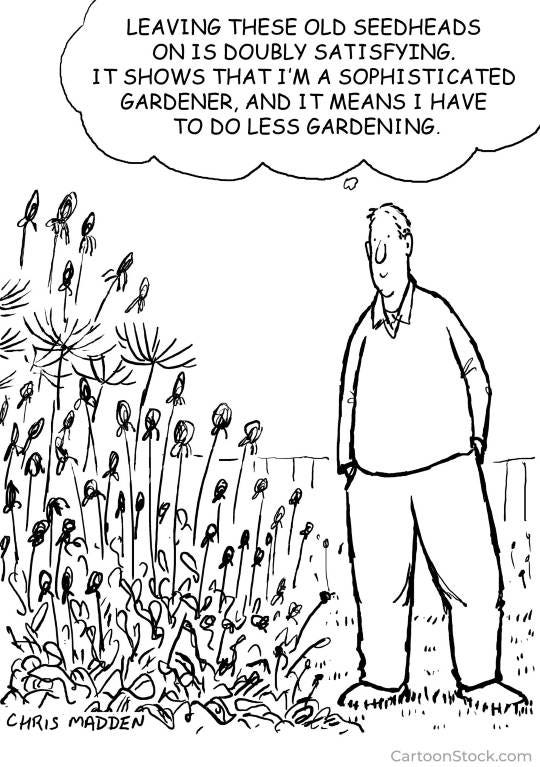
What a wealth of information! Thank you.
I loved the Less Lawn More Life challenge. I planted more natives to our yard this summer, even though our miserable hot, dry summer is a challenge to keep new plantings alive and healthy. By dry, I mean very little measurable rain! The summer humidity is always off the charts. Heather, If you'd like cuttings or seeds from monarda punctata (Spotted horsemint) for your pink garden in Gainesville, I have a backyard full of them, here in Gainesville, to share! We have no "lawn", only plants, hardscape, and groundcovers.